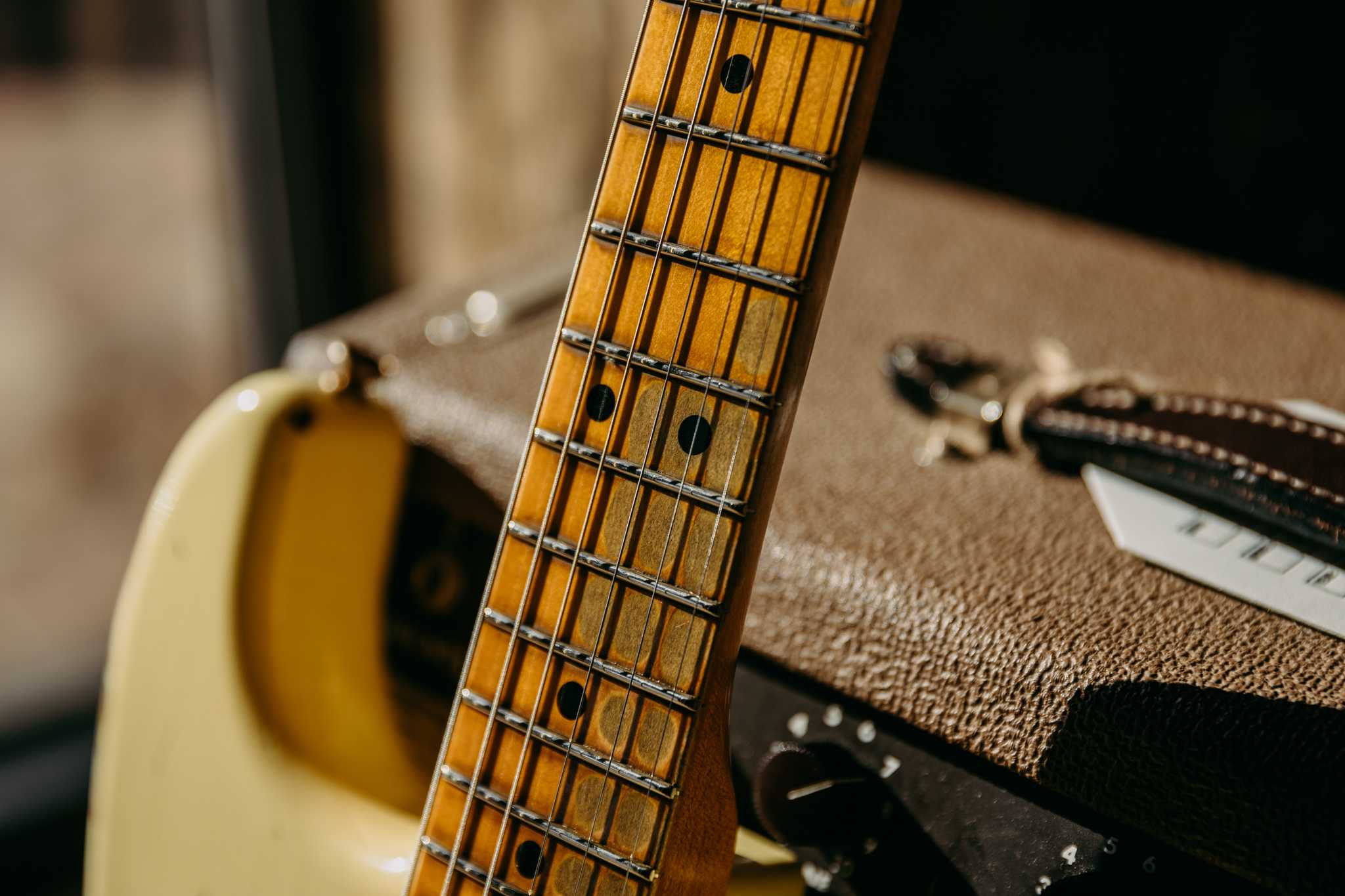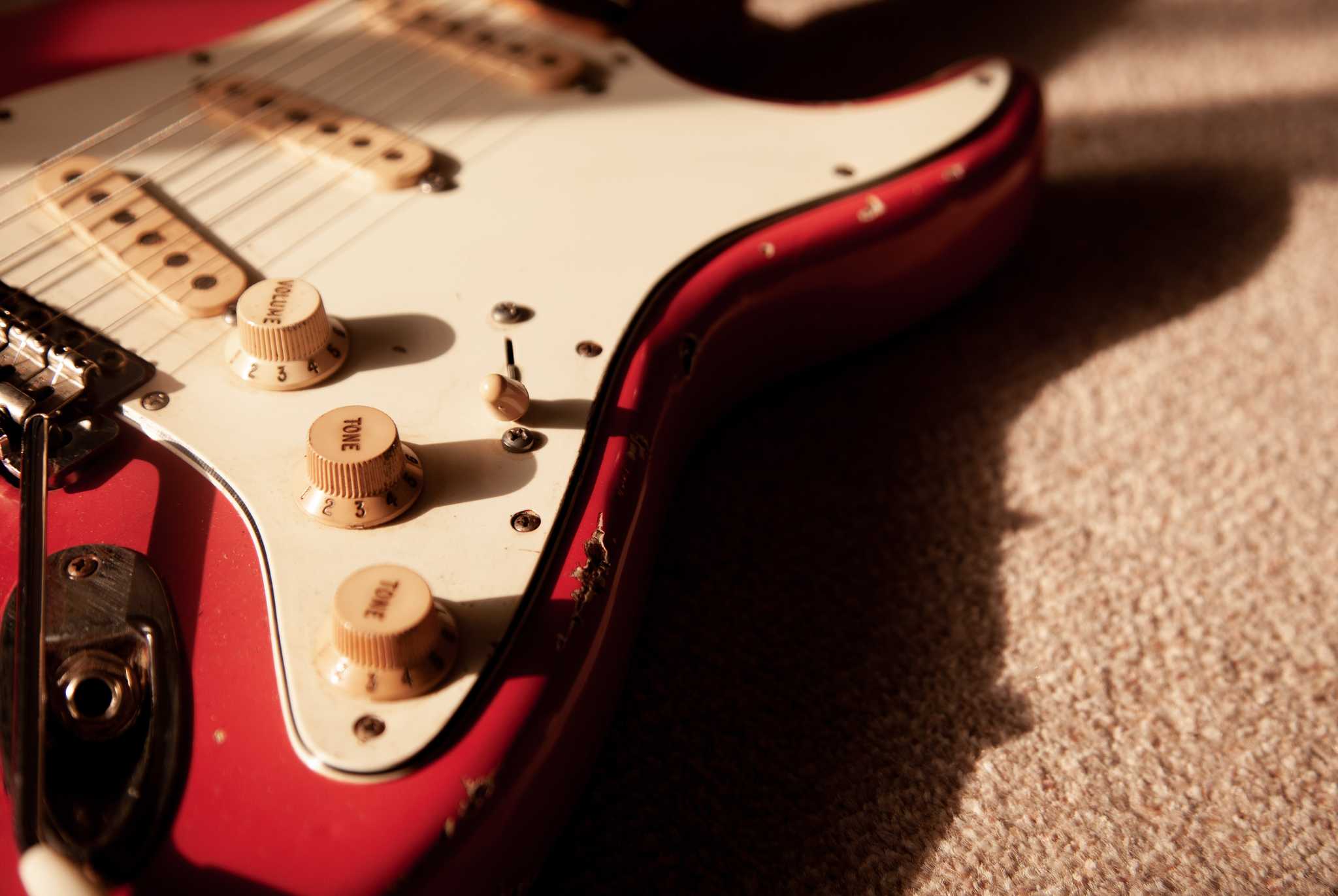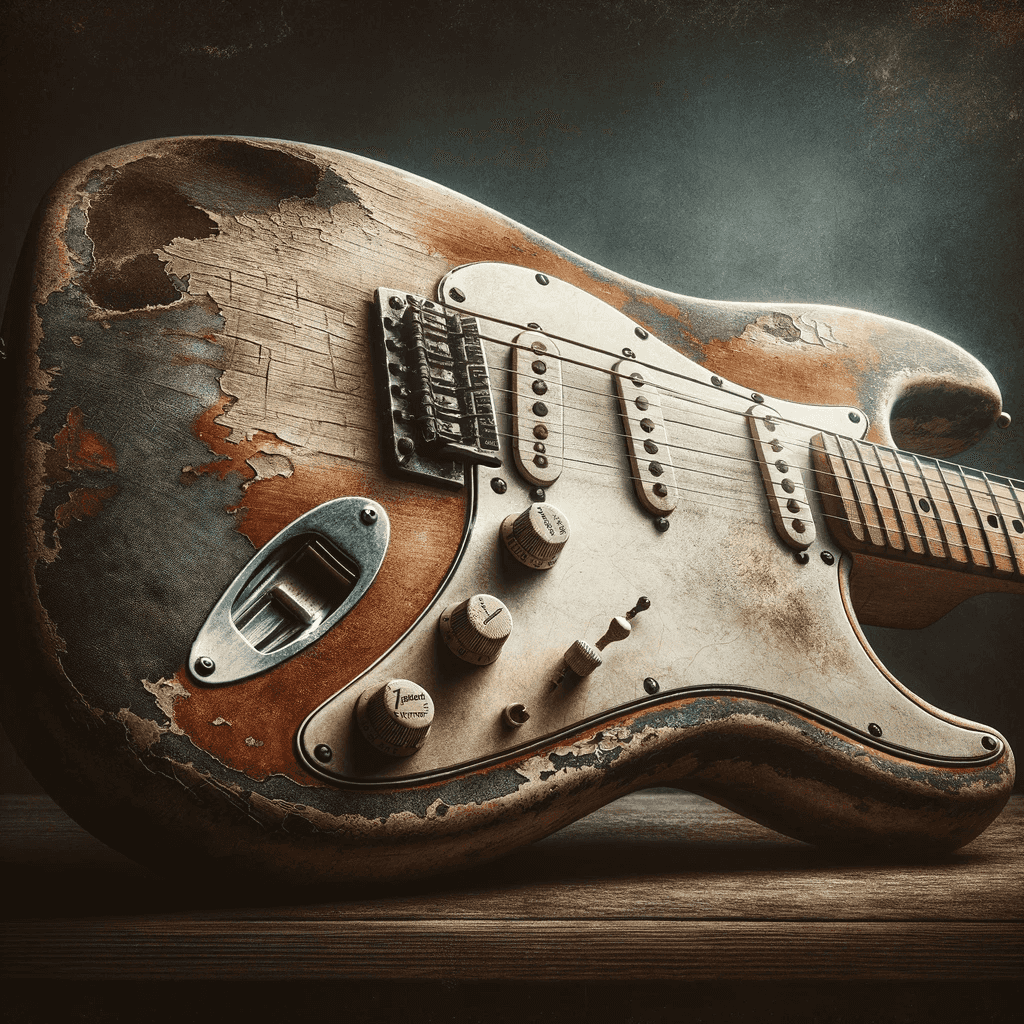A Balanced Exploration Relic Fender Stratocasters
Relic Stratocasters, blending vintage charm with modern craftsmanship, continue to spark debate among guitar enthusiasts. This piece explores the journey of relic guitars from their controversial inception as well as why someone would choose a relic guitar over a vintage one.
 Photo by Eric Parks on Unsplash
Photo by Eric Parks on Unsplash
The Origin of the Relic Concept
Before the Fender Custom Shop introduced the Relic Series in 1995, the idea of intentionally aging guitars was limited to restoration efforts or, in less scrupulous hands, forgeries. The introduction of the Relic Series marked a bold, new direction – offering players the look and feel of a vintage guitar straight out of the shop.
Fender's Custom Shop, under the guidance of JW Black and Vince Cunetto, played a crucial role in legitimizing the concept of relic guitars. Their vision was to replicate the natural wear and tear of a guitar, not just as a cosmetic feature but as a homage to the instrument's journey and evolution.
Understanding the Relic Phenomenon
Relic guitars have always been a subject of debate. While some enthusiasts see them as artificial, others appreciate their ability to deliver vintage vibes without the decades-long wait. This section of the article delves into this debate, presenting both sides and the reasoning behind each viewpoint.
Purists advocate for natural aging, while others find value in the immediate character of a relic guitar. This debate touches on broader themes of authenticity, nostalgia, and the relationship between musicians and their instruments.
Relic guitars simulate years of wear and tear through a precise aging process. While skeptics view this as inauthentic, supporters appreciate the immediate vintage appeal and playability.
Fender's relic guitars are not just visually aged, they are crafted to replicate the playability of genuinely aged guitars. This involves detailed techniques like checking, wear simulation, and strategic finish treatment. At a stretch, the process could be considered an art form, balancing aesthetic aging with functional reliability. However, many argue that the process is inauthentic, and the guitars are merely replicas similar to the phenomenon of artificially aged jeans.
 Photo by Duncan Kidd on Unsplash
Photo by Duncan Kidd on Unsplash
The Range of Relic Stratocasters
The relic Strat lineup offers a variety of models, each with its unique aging level. From lightly worn to heavy relic guitars, Fender caters to a wide spectrum of preferences. The heavy relic guitar, for example, showcases more pronounced wear, appealing to those who desire a guitar with a profound vintage character. Each model provides a unique experience, catering to personal preferences in terms of visual aging, feel, and tonal characteristics.
Selecting Your Relic Stratocaster
Choosing a relic Stratocaster is more than an aesthetic decision. It's about how the guitar connects with your musical style and identity. Considerations include the degree of aging, color options, and specific model features. Some players seek specific era-inspired models, while others prioritize the tactile feel and sound.
Listed below are reasons why someone would choose a relic Stratocaster over a vintage one:
- Cost-Effectiveness: Relic guitars are generally less expensive than genuine vintage guitars, making them more accessible for a wider range of players.
- Modern Playability: Relic guitars offer modern playability features (like adjustable truss rods and contemporary fretboard radii) combined with a vintage aesthetic.
- Maintenance and Reliability: New relic guitars typically don't have the potential maintenance issues often found in older vintage guitars, such as outdated wiring, fret wear, or body cracks.
- Aesthetic Appeal: Some players prefer the worn, aged look of a guitar but want the reliability and warranty of a new instrument.
- Consistency: New relic guitars provide consistency in quality and construction, which can vary widely in vintage instruments.
Sound Quality: The Aged Wood Debate
A significant aspect of the relic Stratocaster discussion revolves around sound quality. Enthusiasts often claim that the aging process contributes to a more resonant and mature tone. However, this is subjective and varies among individual guitars and players.
Caring for Your Relic Strat
Maintaining a relic Stratocaster involves respecting its unique characteristics while ensuring it remains functional and playable. Care practices may differ slightly from those for non-relic guitars, focusing on preserving the aged look while keeping the hardware and electronics in top condition.
Conclusion
Relic Stratocasters stand as a testament to Fender's innovative spirit and understanding of musician needs. Whether viewed as art pieces or tools, they evoke discussions about guitar history, craftsmanship, and the personal connection between musicians and their instruments. Owning a relic Stratocaster goes beyond having a guitar; it's about embracing a piece of musical art that resonates with your personal story and style.
They offer an alternative to vintage guitars, providing a vintage look to a new instrument. Relic guitars are a great option for players who want the look and feel of a vintage guitar without the price tag or maintenance issues that come with older instruments. Making them an excellent choice for players who want the best of both worlds.
